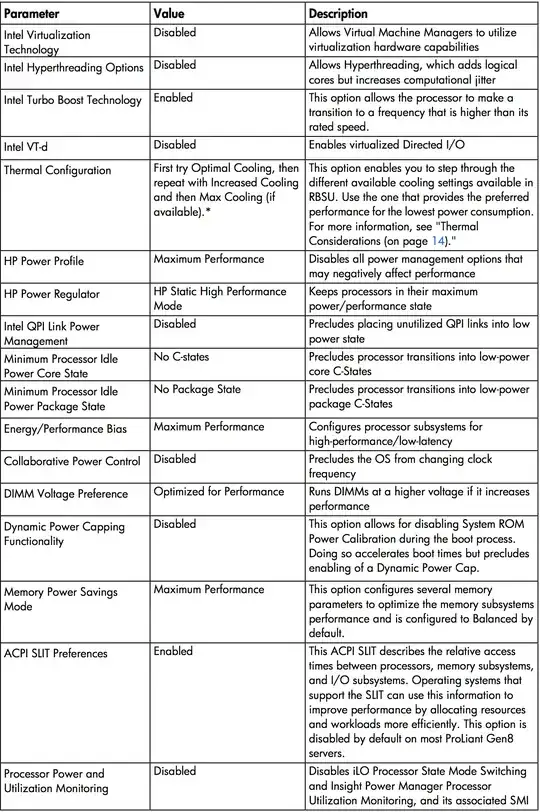ha.. answering my own question.
Found a doc
http://h20000.www2.hp.com/bc/docs/support/SupportManual/c02011017/c02011017.pdf
Basically we have every power management or "green" options disabled to keep everyone burning hot for trading applications. Found out we have to set "Power Regular for ProLiant" to "OS Control Mode".
Once this is set, we were able to load the module and manipulate CPU freq with utilities
from cpupower RPM.
For example:
# cpupower frequency-info
analyzing CPU 0:
driver: acpi-cpufreq
CPUs which run at the same hardware frequency: 0
CPUs which need to have their frequency coordinated by software: 0
maximum transition latency: 10.0 us.
hardware limits: 1.20 GHz - 2.90 GHz
available frequency steps: 2.90 GHz, 2.90 GHz, 2.80 GHz, 2.70 GHz, 2.50 GHz, 2.40 GHz, 2.30 GHz, 2.20 GHz, 2.00 GHz, 1.90 GHz, 1.80 GHz, 1.70 GHz, 1.60 GHz, 1.40 GHz, 1.30 GHz, 1.20 GHz
available cpufreq governors: conservative, userspace, powersave, ondemand, performance
current policy: frequency should be within 1.20 GHz and 2.90 GHz.
The governor "performance" may decide which speed to use
within this range.
current CPU frequency is 2.90 GHz (asserted by call to hardware).
boost state support:
Supported: yes
Active: yes
3400 MHz max turbo 4 active cores
3600 MHz max turbo 3 active cores
3600 MHz max turbo 2 active cores
3800 MHz max turbo 1 active cores
